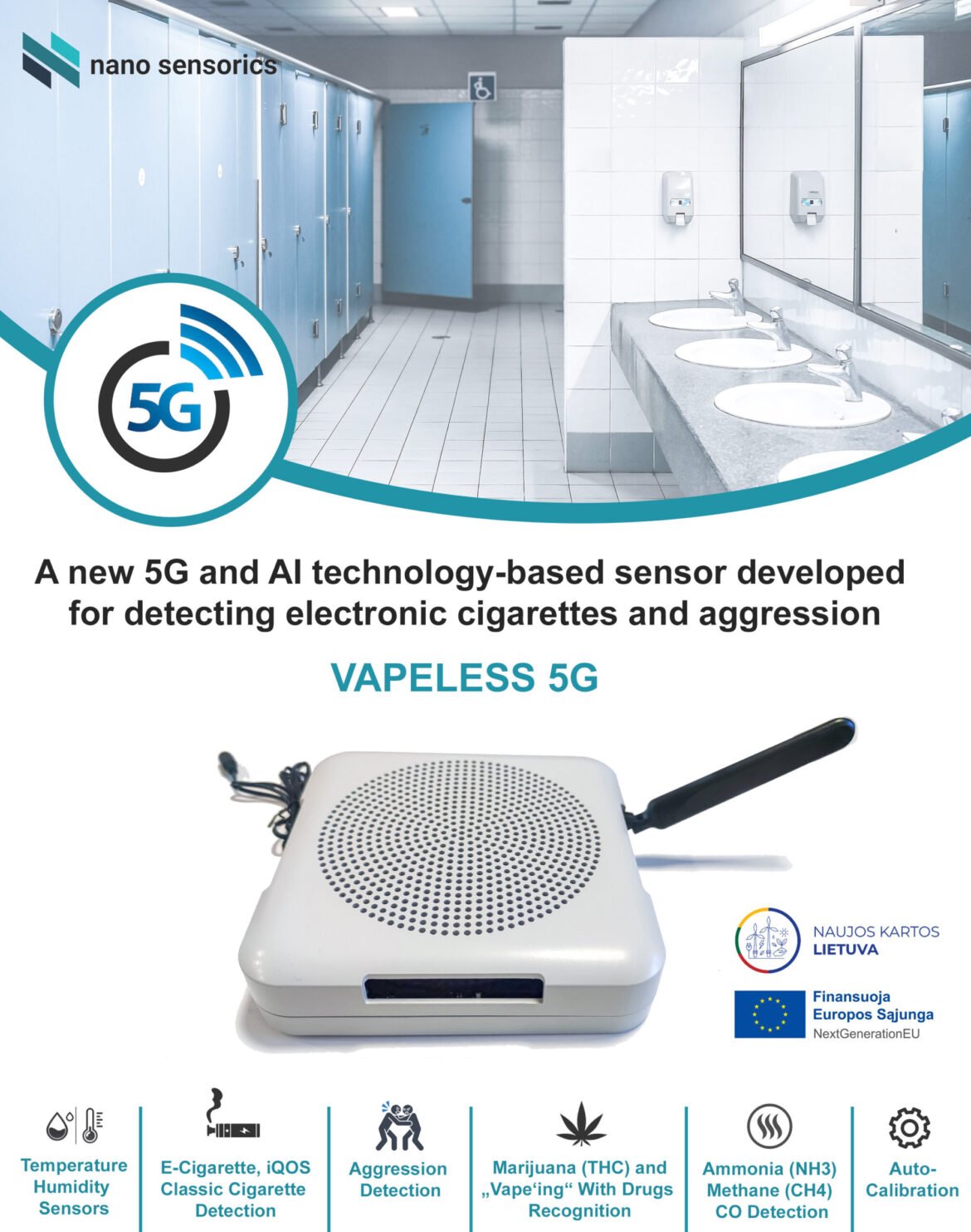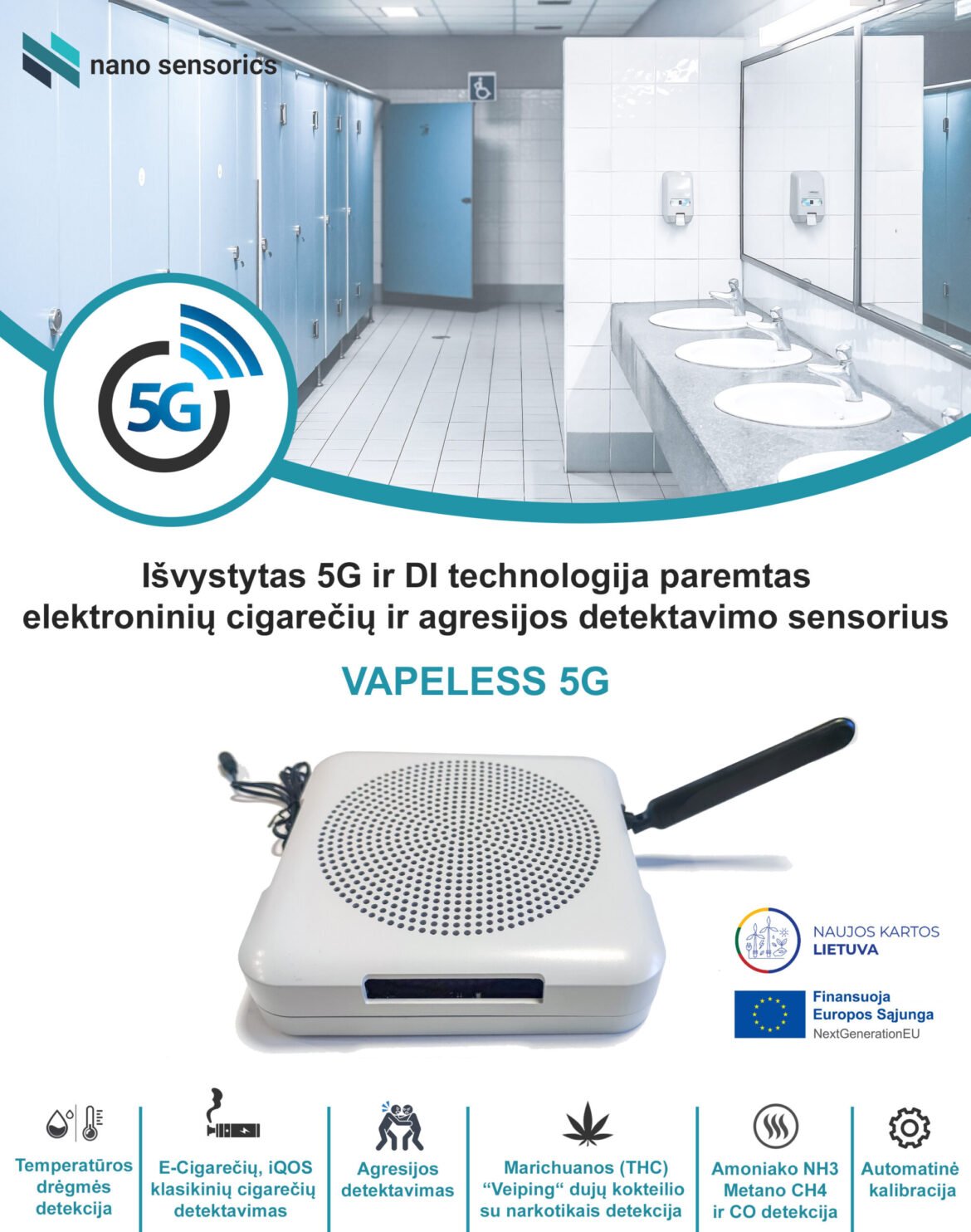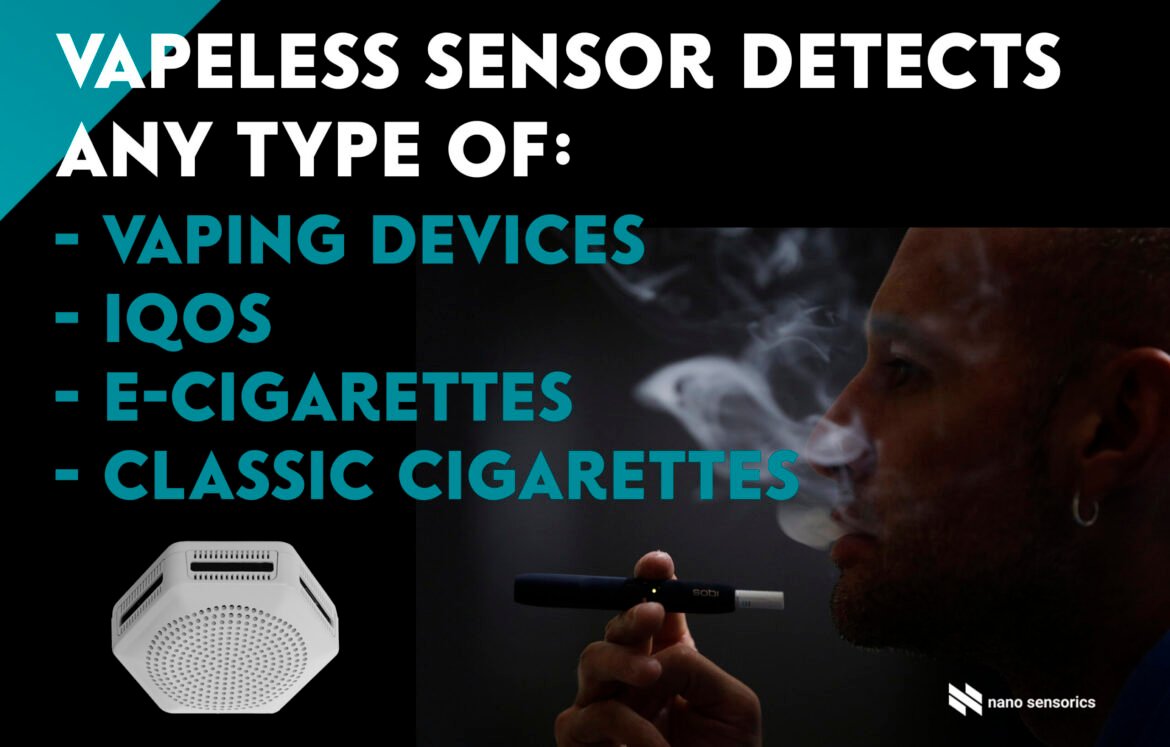The Progress of 5G Sensors is Here!
The era of modern technologies has brought numerous innovations but also new challenges. Vaping, IQOS use, and smoking have become not only health issues but also challenges for ensuring safe environments in schools, offices, and public spaces.
UAB Nano Sensorics has taken on the challenge of creating a next-generation sensor capable of detecting not only all types of e-cigarette usage, IQOS consumption, and traditional cigarette smoking but also identifying acts of violence and aggression using the latest 5G, Internet of Things (IoT), and advanced algorithm technologies. Moreover, we aimed to develop an exceptionally cyber-secure sensor, manufactured in Western countries, to ensure user cybersecurity during these geopolitically turbulent times, as undemocratic nations pose increasing cyber and other threats to Western civilization.
We are excited to announce that UAB Nano Sensorics has achieved its goal—developing the Vapeless 5G sensor, which not only detects vaping, IQOS usage, and drug-related smoking but also identifies aggression and violence. It is fully cyber-secure, features automatic calibration, and is manufactured in Lithuania (European Union).
In collaboration with the European Union and as part of an EU project, we have developed this sensor and initiated its serial production.
Vapeless 5G: A New Generation Cyber-Secure 5G Sensor
The Vapeless 5G is designed to detect any form of vaping, IQOS usage, or smoking. More than just a detection system, it is a smart solution revolutionizing safety.
Why is Vapeless 5G an Indispensable Solution?
- Beyond Vaping: Detecting Aggression and Violence This advanced technology goes further—Vapeless 5G can identify acts of aggression and violence. This is particularly relevant in schools, hotels, transport vehicles, or any other places where safety is a priority.
- Automatic Calibration Forget complex manual calibration. Vapeless 5G features an automatic calibration system, ensuring optimal performance under all conditions.
- The Power of 5G Connectivity The device operates using 5G connectivity, enabling ultra-fast data transfer and real-time monitoring. This is crucial when immediate response is required.
Where Can Vapeless 5G Be Used?
- Schools and Universities: Ensuring a safe environment for students while addressing health and safety concerns.
- Business Centers and Offices: Maintaining productivity and security in spaces where cameras cannot be installed.
- Shopping Centers: Reducing the risks of violence and smoking in public areas.
UAB Nano Sensorics: A Leader in Future Technologies
Vapeless 5G is the latest achievement by UAB Nano Sensorics, poised to revolutionize the market and contribute to creating a safer world. It is a perfect example of how technology can address real-world problems while meeting the highest security standards.
Invest in Safety with Vapeless 5G
For more information about Vapeless 5G and its capabilities, visit our website. Don’t wait—the future starts now!
About the Project
Project Objective:
The project, publicly announced on the EU investment website esinvesticijos.lt, aims to develop, test, and advance a highly accurate sensor for monitoring the low-intensity emissions of electronic cigarettes.
Project Description:
UAB Nano Sensorics (Company code: 305682967, Address: Elektrėnų g. 7, LT-51193 Kaunas) is conducting scientific research and experimental development in smart IoT sensors. The company’s products directly influence efficient energy resource utilization and CO2 emission reduction. These include sustainable construction industrial sensors based on advanced interfaces such as LoRaWAN and 5G.
The effects of electronic cigarettes on bystanders are uncertain and controversial, raising questions about societal health, youth perspectives on smoking, and the consequences of passive vaping. The ability to vape in areas where smoking is prohibited undermines the achievements of public health initiatives and could lead to an increase in smoking rates among youth and adults.
Through this project, we aim to develop an exceptionally precise sensor to monitor low-intensity electronic cigarette emissions. Using advanced algorithms, this sensor will detect various smoke consistencies and correlate them with intensity to enable broad-spectrum electronic cigarette detection.
Technical Specifications:
- Parameters Measured: Vape indices, CO, CO2, VOC; Aggression level indices
- Detection Range: Up to 3.5–4 meters
- Integrated Algorithms: AI-based advanced computational algorithms
- Communication Interfaces: 5G, LoRaWAN (EU, US, AU), NB-IoT optional
- Power Supply: 5–12V DC; AA batteries for communication
Project Duration: Until 2024-12-31
Funding: Supported under the Ministry of Transport and Communications’ Development Program for 2022–2030.
Project Code: 08-006-K-0004





